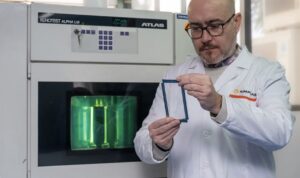VALPLAST project aims to convert plastic waste into biogas

This will obtain a biogas stream that can be used as an energy vector and a digestate for agriculture.
The VALPLAST consortium includes AIMPLAS, the Plastics Technology Centre, the CALAGUA Group UPV-UV Mixed Unit (made up of the Research Institute of Water and Environmental Engineering at the Universitat Politècnica de València and the Department of Chemical Engineering at the Universitat de València), and the companies Global Omnium Medioambiente and Fych Technologies.
The project, financed by the Valencian Institute of Competitiveness and Innovation (IVACE+i) within the framework of the European Union’s 2023 strategic cooperation projects, seeks to implement an alternative to current management of biodegradable plastic packaging waste that is aligned with circular economy principles.
“The main innovation of the project involves understanding that bioplastics are a resource that can be recovered and transformed into green energy,” according to researchers participating in the project.
The aim will therefore be to study, at laboratory and pilot scale, the degradation of different plastics through biological treatment with sludge from municipal sewage treatment plants under anaerobic conditions.
The possible effects of the additives used in the synthesis of plastics (conventional and bioplastics) in the anaerobic treatment process and the subsequent quality of the digested sludge will also be evaluated, given that its main application is agricultural use.
Work will also be done on the development and optimisation of pilot plant instrumentation and control systems, as well as the analysis of costs and the life cycle.
As consortium members highlighted: “They are essential to be able to evaluate the environmental and economic sustainability of the proposed treatment.”
Presence of microplastics in sludge
After the recovery process, analysis will be carried out to measure the presence of microplastics in the sludge.
For this analysis, the methodology developed by AIMPLAS in previous projects (MICROPLAST and PREVENPLAST) will be used.
This method makes it possible to measure these emerging contaminants in both wastewater and the sludge generated at treatment plants.
The process will be used to develop a methodology for energy recovery from bioplastics at STP digesters for better management of these wastes resulting in greater energy recovery.















